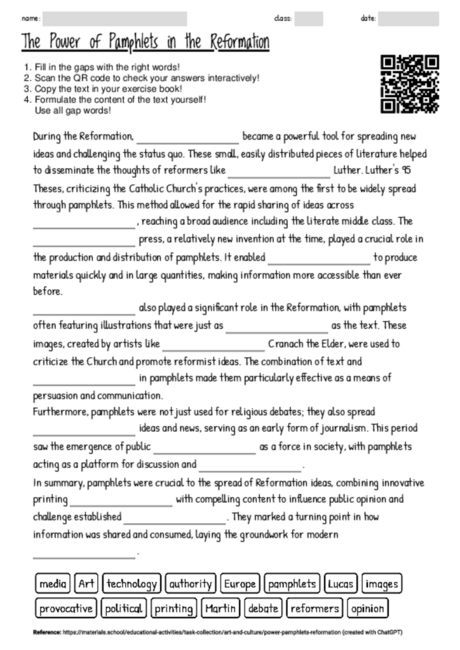The Power of Pamphlets in the Reformation
Cloze texts like the one created on the topic of pamphlets during the Reformation offer several advantages in teaching and learning phases. Firstly, they engage students by requiring active participation to fill in the gaps, enhancing memory retention of the content. Secondly, the selective omission of key terms forces learners to focus on understanding the context and significance of these terms, promoting deeper comprehension. This method also encourages critical thinking, as students must infer the missing information based on the text provided.
Moreover, the content of this particular cloze text provides a concise overview of the impact of pamphlets on the spread of Reformation ideas, combining historical facts with the role of technology (the printing press) and art (illustrations). It serves as an effective tool for introducing students to the concept of media influence on public opinion and social change, illustrating the historical significance of communication technologies.
Additionally, by integrating art and politics into the discussion of religious reform, the text highlights the interdisciplinary nature of historical study, encouraging students to consider how different aspects of society influence each other. This can foster a more holistic understanding of history and its relevance to contemporary issues.
In summary, the use of cloze texts in teaching about the Reformation and the role of pamphlets offers a dynamic way to explore historical themes, encouraging engagement, critical thinking, and a deeper understanding of the interconnectedness of societal developments.

